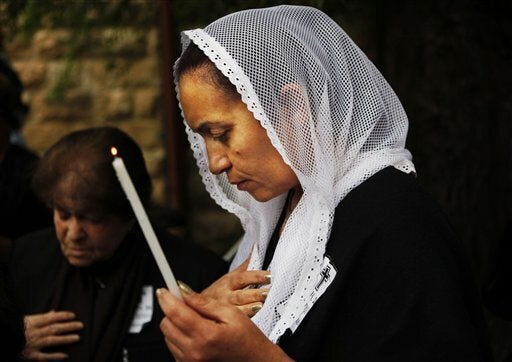
The following article was originally published in The Los Angeles Times Magazine in May 1999. All of the survivors who tell their story below have since died.
While the descendants wait for the full acknowledgment of this Genocide (the first in the 20th Century) by the Turkish government, the United States government - including the President, himself - must stand completely clear on this issue. Playing political football with historical Genocide is a slippery slope.
Similar stories of immense suffering are still told today; and these kinds of stories will continue, until we end them.
These Men and Women Survived the Armenian Genocide. Eight Decades Later, Two Photographers Are Documenting Their Stories Before It's Too Late.
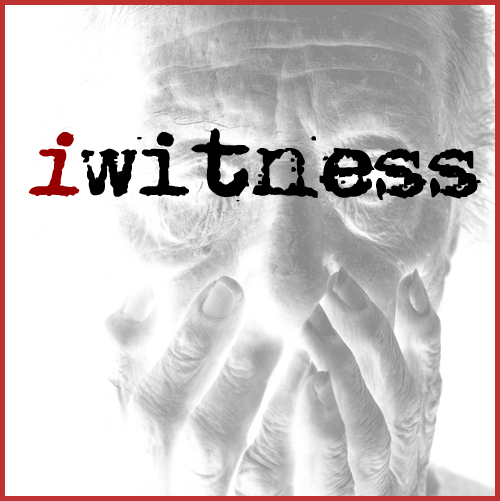
The witnesses emerge from darkness.
"We wanted the backgrounds of the photographs to be all black to represent the abyss," says Ara Oshagan, who, with Levon Parian, photographed "The Genocide Project," which chronicles 65 survivors of the Armenian genocide of 1915-17. About 1.5 million Armenians were murdered on the orders of the Young Turk government, which ruled the remnants of the Ottoman Empire.
"The light that surrounds them is the light that survived," Oshagan says of his subjects. "And the focus is always on the eyes, which sucked in the horrors they witnessed."
The killings were a systematic attempt by the government to exterminate -- or, in today's lexicon, "ethnically cleanse" -- the Armenian population from the empire, stripping them of their homeland of more than 3,000 years. Between 45% and 60% of the Armenian population was lost. Those who remained lived out much of the century in a global diaspora.
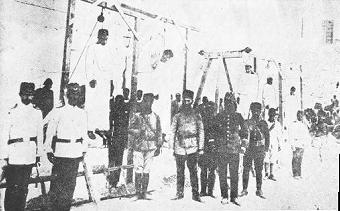
Now time is running out for the few survivors who bore witness to these catastrophic events; most of them are at least 90 years old, and their voices and firsthand accounts will soon be silenced. Hence the Glendale-based "The Genocide Project," launched in 1996 by Oshagan and Garen Yegparian, who conducted the interviews.
Parian and Oshagan also photographed each subject's hands, creating a dramatic split-image of a face and fingers. Says Oshagan: "We wanted the discontinuity of the killings, how their first life was stripped from them and a second forced upon them, to show up in their sliced body images."
"This holocaust is like a long, dark arm that continues to stretch out over the Armenian people," says Parian, whose wife's grandmother is one of the images on the following pages. Like child-abuse survivors, many of the victims never spoke about the horrors growing up--they had no words or images with which to reassemble their unimaginable stories. "They got on with living their lives, raising children and making good in their new countries," Parian explains. "But the guilt of it, the unfinished sorrows, are a huge wound opened in the Armenian psyche, and it's far from healed. We're the generation that has to, if not heal it, at least put a scab on the wound."
* * *
Edward Racoubian born in 1906 in Sivas
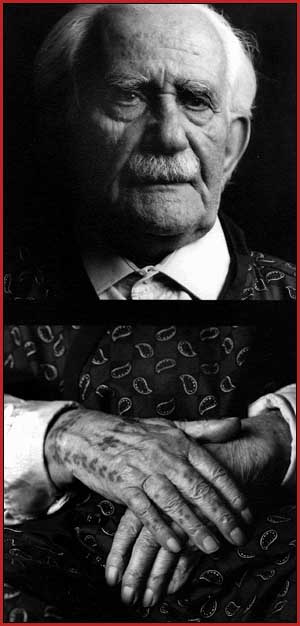
We walked for many days, occasionally running across small lakes and rivers. After a while we saw corpses on the shores of the these lakes. Then we began seeing them along the path: twisted corpses, blackened by the sun and bloated. Their stench was horrible. Meanwhile, vultures circled the skies above us, waiting for their evening meal.
At this point, we came upon a small hole in the ground. A little deeper than average height, the hole was large, and 25 to 30 people could easily fit in it. The women lowered each other down into it. There was no water in it but the bottom was muddy. We were about 20 people and we began sucking on the mud. Some of the women made teats with their shirts filled with mud and suckled on them like children. We rested there for about a half hour. If we hadn't been forced out a little later, that would have been our best grave.
Many days later we reached the Euphrates River, and despite the hundreds of bodies floating in it, we drank from it like there was no tomorrow. We quenched our thirst for the first time since our departure from Sivas. Then they put us on small boasts and we crossed to the other side. From there we walked all the way all the way to Rasul-Ain.
Of a caravan of nearly 10,000 people, they were now only some 300 of the us left. My aunt, my sisters, my brothers had all died or disappeared. Only my mother and I were left. We decided to hide and escape and finally took refuge with some Arab nomads. My mother died there under their tents. With tattoos on my hands and body, they branded me as their own.
The nomads did not treat me well--they kept me hungry and beat me often. I spent most of my days in the desert, shepherding. When I became 18 years old, I met some Christian Arabs who told me to go to Aleppo, where I could find some Armenians. In January 1933, I arrived in Aleppo.
Kristine Hagopian Born in 1906 in Izmir
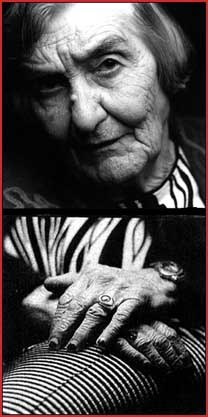
We had already been deported once, in 1915-16, sent toward Dier-ez-Zor. But my uncle's friend had connections in the government and he had us ordered back to Izmir.
Orders came again that everyone must gather in front of the Armenian church to be deported. My father refused to go and told us not to worry. He didn't think the Turkish government would do anything to him, since he was a government employee himself. Twelve Turkish soliders and an official came very early the next morning. We were still asleep. They dragged us out in our nightgowns and lined us up against the living room wall. Then the official ordered my father to lie down on the ground. They raped him. Raped! Just like that. Right in front of us. And that official made us watch. He whipped us if we turned away. My mother lost consciousness and fell to the floor.
Afterward, we couldn't find our father. My mother looked for him frantically. He was in the attic, trying to hang himself. Fortunately, my mother found him before it was too late. My father did kill himself later, after we escaped.
Haig Baronian Born in 1908 in Baiburt
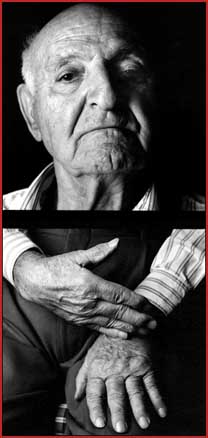
I do not remember how many days our decimated caravan marched. Day by day, the male contingent of the caravan got smaller and smaller. Under the pretext of not killing them if they would hand over liras, gold coins, men would be milked of what little money they had, and then they would be killed anyway. Days wore on. Those who could not keep up were put out of their misery.
Always bodies were found strewn by the wayside. At one place, my little grandmother loudly cursed the Turkish government for its inhumanity. Pointing to us children, she asked: "What is the fault of children to be subjected to such suffering?" It was too much for a gendarme to bear; he pulled his dagger and plunged it into my grandmother's back. The more he plunged his dagger, the more my beloved Nana asked for heaven's curses on him and his kind.
Unable to silence her with repeated dagger thrusts, the gendarme mercifully pumped some bullets into her and ended her life. First my uncle, now my grandmother were left unmourned and unburied by the wayside. We moved on.
Edward Bedikian Born in 1902 in Sivas

There was a girl who I had befriended on the road. Her name was Satenig. She had a little bit of money and she gave it to me. "Don't let them take me," she said. They would come around every day and take whoever was dead or very weak. She was not in a good shape. I stood her up and leaned on her, held her up. They came. I was holding her up, but they saw her and took her.
Sam Kadorian Born in 1907 in Harput
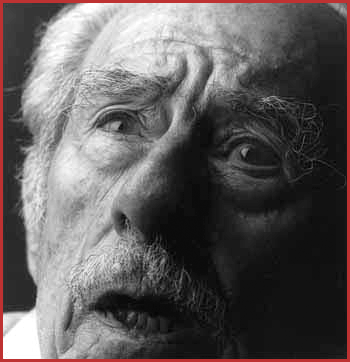
They took us from Husenik to the shores of the Euphrates River. For a while we were left alone. Sometime later, Turkish gendarmes came over and grabbed all the boys from 5 to 10 years old. I was about 7 or 8. They grabbed me too. They threw us all into a pile on the sandy beach and started jabbing us with their swords and bayonets. I must've been in the center because only one sword got me, nipped my cheek. But I couldn't cry. I was covered with blood from the other bodies on top of me, but I couldn't cry. If I had, I would not be here today. When it was getting dark, my grandmother found me. She picked me up and consoled me. It hurt so much. I was crying and she put me on her shoulder and walked around. Then some of the other parents came looking for their children. They mostly found dead bodies. The riverbank there was very sandy. Some of them dug graves with their bare hands and tried to bury their children in them. Others just pushed them into the river. Their little bodies floated away.
Arpiar Missakian Born in 1894 in Kessab
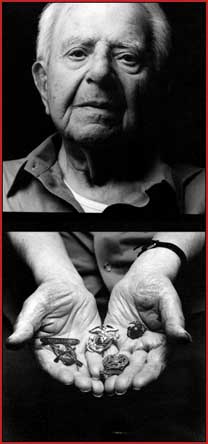
In 1909, during the Adana massacres, Turkish soldiers attacked Kessab. I was merely a boy then. They came early in the morning. They were 20,000 strong with Mausers and other artillery. The men of our town fought back, my father among them. But all they had were these ancient hunting rifles. Shifteh, they called them. Not very effective. They lost 50 to 60 men before we fled. They held off the Turkish army until noon or so, then we fled.
With the help of the French, we fled to Latakia to the north on boats. We returned five to six days later to find all our houses burned to the ground. Only charred stone walls remained; everything else was burned. It took us months to rebuild.
In 1915, we were the last to be deported out of Kessab because we were Protestant. The American ambassador in Bolis had apparently secured guarantees for our safety, but we were deported anyway. They took us toward Dier-ez-Zor--the interior Syrian desert. Our whole family: my father, mother, four brothers, two sisters. I was 20 or 21 at the time. We loaded everything we had on mules and horses and set out under armed guards. They took us to Meskene on the Euphrates River. Meskene was a huge outdoor camp where tens of thousands of Armenians had been deported--bit by bit they were sent to Dier-ez-Zor, to their death. We were there for a while. We lived under tents along with a lot of others from Kessab. Most of the time we had nothing to eat. Sometimes my father would buy bread from the soldiers, but they had mixed sand with the flour--so we ate this hard bread, and sand crunched under our teeth.
Meskene was a horrible, horrible place. Sixty thousand Armenians had been buried under the sand there. When a sandstorm hit, it would blow away a lot of the sand and uncover those remains. Bones, bones, bones were everywhere then. Wherever you looked, wherever you walked.
Sion Abajian Born in 1908 in Marash
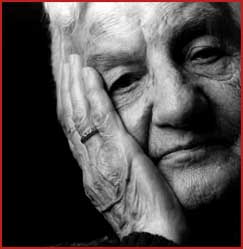
The crowds were huge in Meskene. We were in the middle of a vast sandy area and the Armenians there were from all over, not only from Marash. We had no water and the gendarmes would not give us any. There were only two gendarmes for that huge crowd. Just two. Wasn't there a single man among us who could have killed them? We were going to die anyway. Why did we obey those two gendarmes so sheepishly?
Eventually we crossed the Euphrates River to Rakka, where we found an abondoned house with no doors or windows, and we squatted there. But we still had no food. We used to eat grass. We used to pick grains from animal waste, wash them, and then in tin cans fry them to eat. We used to say: "Oh, Mommy, if we ever go back to Marash, just give us fried wheat and it will be enough."
To donate to and learn more about The Genocide Project visit www.genocideproject.net
Janet Kinosian is a veteran Los Angeles journalist and writes for The Los Angeles Times, Reader's Digest, People, Saturday Evening Post among many. She provides Media Consulting at www.janetkinosian.com.
